Hello, Conservario here.
You might think that ukulele can only be used in Hawaiian music, right? Well, I want to loudly declare,"Ukulele can play anything!"
In this article, I will introduce how playing different genres on the ukulele will sound and feel.
■ Pop
Pop music refers to popular and mainstream music (well, maybe).
I’m not joking, but the definition of pop music isn’t something that can be easily explained in one sentence. Where does pop music start and end? What counts as mainstream music? These things differ from person to person.
In my opinion, pop music includes J-Pop and hit songs from Western pop music that sell worldwide.
Now, let's dive into playing some classic pop chord progressions!
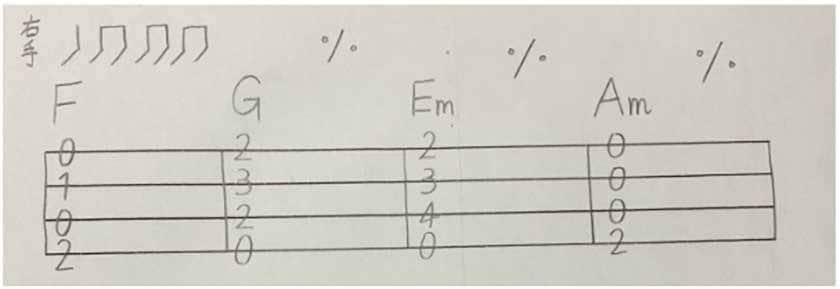
This is a classic J-Pop chord progression.
If you listen to popular songs on YouTube or the radio, you’ve probably heard this chord progression at least once.
The chord progression is F → G → Em → Am, and the strumming pattern shown in the image is commonly used for this.
This chord progression is often found in the chorus of hit songs.
One of the characteristics of J-Pop is that the chorus tends to have simpler chords.
This chord progression is something many beginners can play!
Even if the intro or verses are complex, the chorus often simplifies.
That’s because in a song, the "vocals" are the main focus—the diva.
Complex chord progressions create a sense of "Whoa! What’s this song?" but they can make the melody more complicated.
To maintain the listener’s attention (especially if they’re just casually listening), making the chorus and melody simpler helps it sound catchier.
If you're a beginner and you want to play a song, but the chords seem too difficult, try practicing the chorus first.
You might find it easier than you think!
■ Rock
What kind of music comes to mind when you think of rock?
Maybe it's One OK Rock? The Beatles? The Ventures?
As I mentioned with pop music, rock is also a genre with such a wide range and varying interpretations, so it’s hard to define in just one statement.
I could introduce modern rock, but I’d like to go back to the roots of rock, which is deeply connected with blues. So today, I’ll show you some classic chord progressions based on the blues.
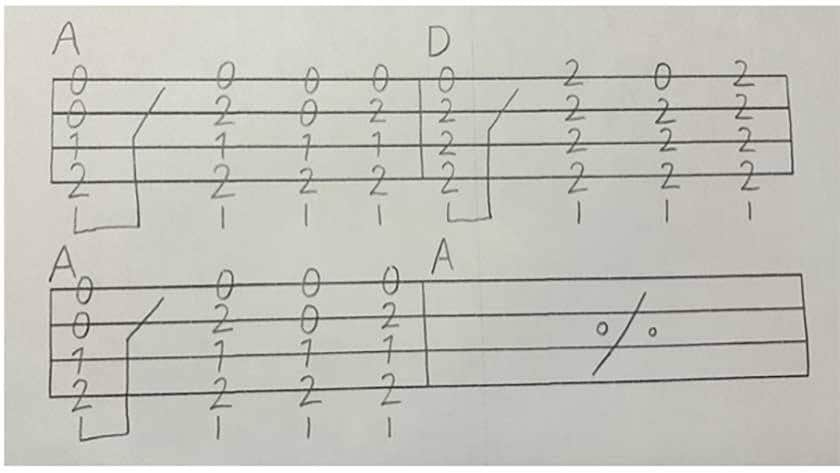
I’ve simplified the chords as much as possible, but I’ve added some embellishments to capture the right feel, so try playing exactly as shown in the tablature. I hope you can immediately feel the essence of good classic rock (and if not, I apologize!).
The chord progression is A → D → A → A, which is generally called a blues progression. Typically, a full blues progression spans 12 bars, but this time we’re only using the first 4 bars.
As for the right hand, you can play it however you like, but I recommend using a shuffle rhythm.
For those who are wondering, “What is a shuffle?” here’s a super simple explanation:
If you play down and up straight, it sounds like “da-da-da-da”—that’s a straight rhythm.
But if you lengthen the downstroke slightly and play “da-jah-da-jah”, that’s the shuffle rhythm.
I could explain it using terms like "longer 8th notes" or "omitting the middle of triplets," but I think it might be confusing for beginners.
Straight and shuffle rhythms are such vast topics that you could write an entire book on them. If you're interested, I recommend looking into them further!
■ Jazz
Many people have the impression that jazz = difficult, and in a way, that’s both true and false.
If you're not someone who listens to jazz regularly, you probably wouldn't even recognize what sounds "jazzy."
Personally, I’d like to share a chord progression that sounds jazzy to me, one that’s a classic and easy enough to play.

Did you feel the jazz vibe?
This is based on the classic jazz chord progression II-V-I (two-five-one). The chords are:
Dm7 → D♭7 → CMaj7.
This progression shows up quite often in jazz, so if you want to get good at playing jazz, you should aim to play this smoothly.
For the right hand, I recommend playing just downstrokes.
You can also try arpeggios, which will add a stylish touch.
I believe there are still very few people around the world playing jazz on the ukulele.
Some say the ukulele’s four strings aren’t suited for jazz’s complex tension, but I think being able to play both single notes and chords on the ukulele is a huge advantage.
Many other instruments can’t play full chords no matter how hard you try.
So, when you think about it, playing jazz on the ukulele is definitely doable.
If you really want to master jazz, start by listening to it first.
To summarize
We’ve explored what happens when you play pop, rock, and jazz styles on the ukulele.
Did any of these styles resonate with you?
I encourage you to try out different genres—you might experience something surprising and exciting.
Thank you for reading until the end!
→ SOUND HOUSE Ukulele Selection
The “sound & person” column is made up of contributions from you.
For details about contributing, click here.






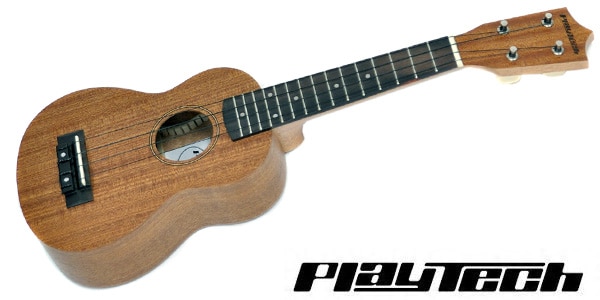





![[Enjoy the Ukulele Even More!] Tips for Playing Your Own Accompaniment](/contents/uploads/thumbs/5/2021/12/20211230_5_15993_1.jpg)
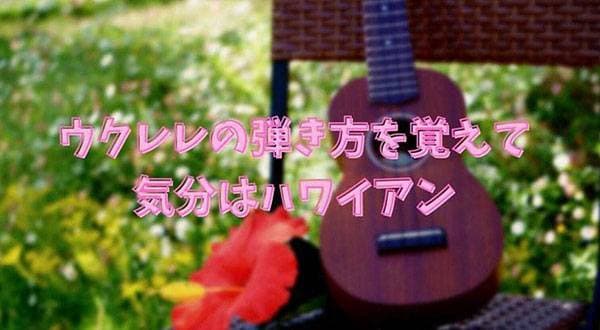
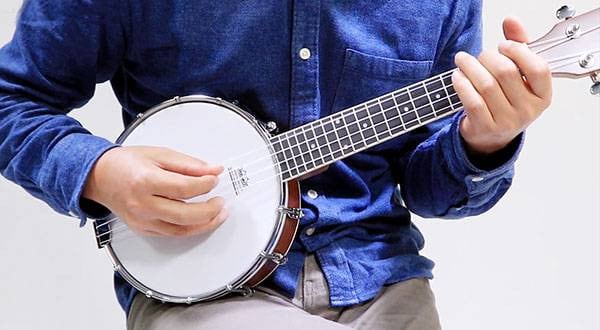
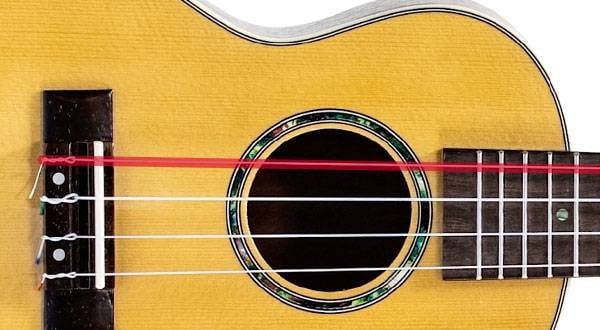
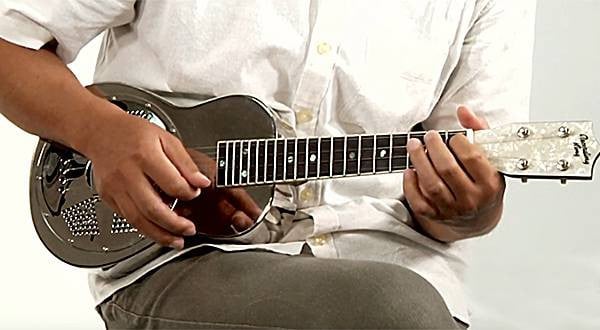
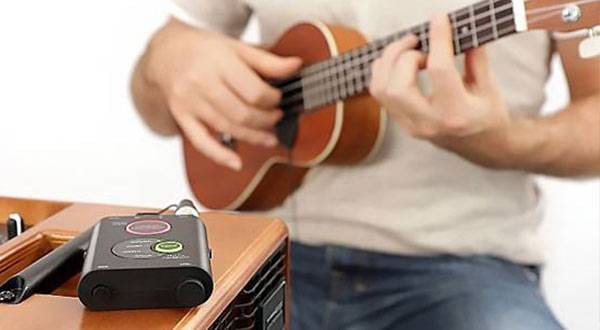
 サウンドハウス社員が選ぶ 『おもしろ商品』はコレだ!
サウンドハウス社員が選ぶ 『おもしろ商品』はコレだ!
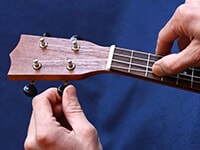 ウクレレのチューニング方法
ウクレレのチューニング方法
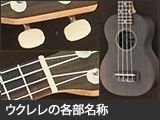 ウクレレの各部名称
ウクレレの各部名称
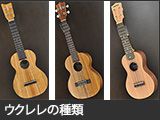 ウクレレの種類
ウクレレの種類
 ウクレレスタートガイド
ウクレレスタートガイド
 ウクレレ初心者講座
ウクレレ初心者講座















